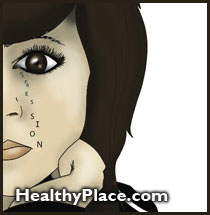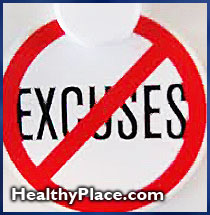Co-Creating With God
Getting Off The Rollercoaster
All creations originate as a thought. What was once a concept for someone, now becomes discernible reality to another. To ponder the implications of that sentence are incredible. Ask yourself...
"What is a thought ?"
How does one define the source of all definitions. How do you put into words, that which gives birth to words. Through consciousness, an individual is able to experience or feel a need for something... and then understand a way in which it is able to be brought into reality.
When we talk of creativity, we might immediately tend to think of a painting, a sculpture, or perhaps a piece of music, but these are only examples of refined creativity. All of us have resourcefulness and innovation, so to say that "I'm not a creative person", is only to compare yourself to other people whose creations expand outside their own immediate world.
Sometimes we can be resentful of an apparent lack of talent in a some area, and then allow this thinking to dominate the conception of our overall abilities. Through unawareness, we assume that no talent in one area shall hold true for all others. However, for every path in Life, there is a talent appropriate to serve that particular need. When we discover the talent that resides within us, we can be sure that we will find the same joy and fulfilment that others have found throughout the many and varied walks in life.
To talk of the talent of Mozart or the talent of Mother Theresa, would eventually bring you to a common quality that each in their own way have found. When someone's talent is uncovered, they will be found to be doing what they know is good and what makes them feel good. They are free in the use of the energies that propel their wants as they do what comes easily and instinctively. When any such task is then completed, the feeling of contentment and satisfaction is the universal characteristic that serves in the continuation of expressive desires.
Through my training in Electronics, I have obtained all the understandings of Color Television to such a degree that I am now able to repair them, yet I still marvel at this invention and its theory of operation. It never ceases to be a source of delight and wonder that someone could conceptualise such a device and bring it into reality. When I look at a city skyscraper in the making, I see ingenuity unlimited. I see skill, wisdom, and talent. I see the tools employed to do all the various jobs. I hear an electric drill whining away and think of it's motor driven by a strange mysterious force called electricity. I think of someone trying to understand how a mysterious magnetic field would have to be employed to make such a device spin at high speed. I imagine the joy of the Architects at seeing their creation grow before their very eyes. What started out as someone's dream, has now been given the ability to be touched by the hand of another. When someone designs a car and oversees all aspects of its production, that person will then see their dream unfold before their very eyes. Eventually, they will end up sitting inside their own dream. In all these examples, what began as a seed in the mind of one, becomes available for the discernment of another.
In the early days of my songwriting development, I would get immense pleasure from each of my new creations, however, there was a time when the flow of exciting new material would stop. I began to get anxious and very concerned that my days as a composer were limited. The enthusiasm and joy of my early efforts was replaced by a quietly disheartening concern as time passed by without any new songs. Thoughts such as ...
"I'll never be able to write again."
or
"It was too good to be true",
...would very often enter my mind. Fortunately I was graced with more inspirations and many more songs, and it taught me that one's creativity ebbs and flows. I ponder these particular thoughts and see also how my life has its own Ebb and Flow.
The energy I put into my music can be enormous, and very rarely will I write a song in a flash. Though the mechanics of putting pen to paper as the energy expresses itself seem to make the song appear in no time, the thoughts that are dwelling in me require a kind of "slow to moderate" temperature setting to be used. This cooking process of my musical creations is all very strange; sometimes my creative thoughts are working on a subject without me even realising it. An event in the past can be a trigger to a way of thinking so discreet, that another prompt from some other related part of the original event will make the creation gel and a song will then be born.
From this I now recognise that we have many types of experiences and we can learn from all of them. For a time, things happen inside us as we unconsciously consolidate events which have come our way. Afterwards, we then find we are able to explain our feelings so as to express them knowledgeably. It like our batteries are on charge or something is cooking. For myself, this process works in all areas of my life, and especially where I have an output that I want to be shared. Instinctively, I feel it will be the same for you.
FINDING YOUR TALENT:
To be able to find peace in yourself with regard to talent, you must understand what aspect of your nature you know is good, and then go about bringing this goodness to other people. To begin believing that you have talent and great creativity, will then liberate the state of mind to allow these jewels to be revealed. You will affirm your creativity just as you are affirming your goodness and Love. By calling on these qualities within, you then allow your creativity to come forth through your positive attitude.
CREATIONS OF THE EGO:
Since being creative requires effort, conditioned thinking through a fear of the necessary energy, can easily be seen as causing the death of countless wonderful ideas. When negative thinking is allowed to continue whenever creative thoughts are born, the ability to be expressive through the creative process is suppressed as the energies that were available to the development of ideas, become lost, or get redirected into other areas. When creative urges are withheld from evolving, a way of thinking is then formulated which sees oneself as being a non creative person.
Sometimes we say that "It is too hard!" and indeed, many times things are "Too hard", but even as we say these words, we let something very valuable go unnoticed. When we kill an idea by thinking like this, we have become a victim of Ego thinking. We never said it was impossible, we only said it was "Too Hard". We were unthinking in the words that formulated in our minds and allowed a fear to guide our wants, our energies, and our happiness. It was a fear of effort. It was subtle and quite nonchalant, but it was a fear. It was the Ego acting upon a situation by wanting to make things go easy for us. Remember once again... Ego will think for the situation of the moment and give us options to keep things uncomplicated for us. It does not consider future reward from effort. It has no patience, and it would be happy to let us sleep for the rest of our lives.
KNOWLEDGE WITHIN:
Through the ongoing process of learning and employing our acquired knowledge, we are able to bring into our lives the products of our thinking. By this understanding, we can now see that all actions are creations, since all creations originate as thoughts. The action of doing mirrors our thinking, so it is now open to us that we create our own life. Through our behaviour modelled on our thinking, we can, and do bring about the things that are a part of our life. Even fear based ways of thinking still have the ability to create, and it is through this that we are able to appreciate how we can create our own problems; negative situations; or even chaos. When we act from Love based thinking, our thoughts, and therefore our creations, bring good things into our lives as well as the lives of others. Since the fruits of our efforts originated through thoughts which centred from Love, we allow the creative outputs of other Love based thinking people to infiltrate and inspire our own Life even more.
When we act in Love in all things, our Love based way of thinking follows the direction of our True Self and we bring forth great changes and opportunities into our life. We are CREATING a new life for ourselves and others who will be a part of this new life. People will see good things come into our life and respond by wanting to know how it is that we have such things. Our Love will now open up doors for us that would otherwise have stayed closed. The reason they were closed is revealed by an understanding that we had nothing to offer those who were behind such doors before, and they in turn, had nothing to offer us. What we would've found while we were slaves of Ego thinking would not have interested us one bit.
Goodness is throughout the world, and when we have something good to contribute, the world eagerly opens its arms to the good things we have to give. To those who want good things, the world is also just as eager to give. Affirm an abundant and prosperous life for yourself. The truest Love knows no limits.
By having the want to be a part of good things, you naturally encounter others who also know of and seek out good things. Our Good thoughts create good opportunities and we then become a part of the true creation process. We become equal creators with God since we are both motivated by Love. We both work for the good of humankind, we both work for the highest good, and we have justifiable pride in our accomplishments.
We are now Co creating with God.
When we see our Spiritual link with life, it affects all aspects of our life. Our True Self is then able to work for us in a truly integrated way. We will then allow all such aspects to mirror our life. We have re-Created our life through the creation of a new unity, and it is this new unity that will bring us a new Peace.
EQUALITY FOR ALL PEOPLE IN ALL THINGS:
Since we are equal with all things in creation, all creations originating from our thoughts are equal in magnificence to any singular creation that has ever been or ever will be. Regardless of whether the creation is tangible or abstract, complex or simple, subtle or striking. To open our minds to the possibility of limitless horizons is in itself another great creation. Through the stillness of Love we are able to listen to our thoughts and know that some how, we will find a way to bring about the ideas that feel good and true for us. Our efforts will even have an ability to go on and inspire creativity in others.
Good creativity does not restrict itself to the fine arts, but is more precisely defined by the goodness it gives firstly to yourself and then of course to others. To be able to share your goodness and Love based ideas with another person is to know that your creative abilities are fully functioning. Creativity is universal in its output. There are no border lines, there are only horizons; so if you wish to travel beyond those horizons, you can do so by expanding your knowledge through learning.
THE VARIOUS NATURES OF CREATIONS:
Some creations are abstract such as Music. You do not have the creation totally at your disposal as you do with a painting. To experience music you have to add the dimension of time, and it is the soul which takes in the quality of the creation. When you look at a painting, you have the entire concept delivered to you at once. Though we are able to study it in detail later on, when we first look at a picture, we know exactly what it is all about. Once again our soul takes in the quality of the creation but this time, it has a physical manifestation of canvas and paint. Books are like songs since they unfold and tell us a story, but it's complexity is increased since a book is complete and fully available to us, yet we need to take time to read it through.
When a musical instrument is played live, each instant that passes is pure newness. There is nothing of what was or what of is to come as in the case of a book. The creation is fully enjoyed by being in "THE NOW". When people share a meal together, they partake in the unfolding of the efforts and talents of the person who created the meal. Here it is our body that enjoys the creation. It is tangible, and we needed time to enjoy it. If the meal was a romantic dinner for two, then an added feeling of contentment at the soul level would also exist.
Creations can take any form by being Abstract or Physical, and the enjoyment can also be Abstract or Physical. To lead an inspirational life is Abstract in the giving and receiving, as seeds of creativity are laid everywhere you go. By developing your own Love, you are then able to give a gift so precious, that it far surpasses the greatest creation that has ever taken a form in the physical. When we create a life of Love for another by our own example, we create freedom and peace for other people. To be able to create happiness for someone who is sad is a great thing. To be able to teach someone how to create a good life for themselves is a wonderful thing. When one shares their new knowledge for the good of others so they are able to pass this ability on, it then demonstrates how thoughts themselves are tremendous creations.
Any talk of creations and creating is not complete without the mention of bringing children into the world. Of all the greatness that exists in the previously mentioned examples, to bring a child into your life and nurture it with Love and caring, is in my mind an incredible achievement for any individual. To remember that children are but clay in the hands of the potter, we then find ourselves with an awesome ability to mould children into any shape at all. When we employ the design based on Love and also add our own way of Loving in this moulding process, we know we are part of the creation process of A LIFE. It is a life modelled in Love which allows our own Love to continue even after our time here has passed. By devoting our efforts to raising a child in Love, we give a gift to the world... we have created a Life from the Goodness of Life for the Glory of Life.
CREATIVITY AND "THE NOW":
Through understanding the value of expressing your creativity, it is clear that the goodness you give, shall come back to you in goodness from other things. But to be efficiently creative on a regular basis, we need to return to the concept of "THE NOW". Your creativity can only exist in the present, and when we dwell on past or future events to much, we have in essence missed a lovely visitor who came to call on us. When we create, we are one with our thoughts as we conceive. We are developing newness, and to do this properly, we need to have at hand the full use of our abilities.
When we project out of the present, we are living out a pre-formulated series of events that has no room for growth. What was, will always be and therefore can never be modified or altered. All we end up doing is going around in circles to re-invent the wheel.
In the present, we have at our disposal "Peace" as our greatest asset and from this state of well being, we have an enormous potential for variety to then help us in the process of creating. With clear vision and good intent, we can be sure that the concept that was seeded in our minds, will allow us to bring forth our desires into reality.
ENJOYING THE CREATIONS OF OTHERS:
I once heard Music described as "The Flower of Feeling". I also think of it as a fruit of the Soul, but for some people, it is food for the Soul. As mankind came out of the swamps and lit the first camp fires, perhaps the primitive percussion music of sticks and logs became the primeval language. For myself, I feel that through music, man connected with the spiritual essence, since music can speak in ways that spoken language cannot express, and though he may not have known it, it might have been the first form of prayer. Even today as we listen to an instrumental piece or even a song in another language, a quality of feeling still manages to be understood by our heart and soul. Our minds are able to set the scene in a most perfect way, and through that peace, we are able to drift away with the notes to become part of the creation.
Since music is a form of communication, we can use this concept to try and understand what might have been the motive of writing a piece of music. Through calling on our awareness, we can then ponder the efforts and talents that have gone into all the various productions of music. We can ask why is it that the given title was used. We can go with the flow and feeling in the tune and listen to the passion in the words. Every now and then, try to go deeper that your daily routine might allow...take time out to unwind. If you are musical, let the talent of others nurture your own talent so as to produce that "Fruit of the Soul". If you are not musically gifted, then let that "Fruit" be "Food" for your own soul.
Music can be used as a very powerful tool to bring you peace. Listen to gentle music if you don't already, and get into the soul behind the creation. When you bring peace to yourself through such actions, you have actually created Peace for yourself; Yes!...you have Created, and such a creation is priceless.
Allow your own creativity to be enhanced by the creations of others. Look deeper into the work so that the meaning and motivation in the work may enable you to find an inspiration for your own creativity. There are very few people who are able to claim total originality, so to admit inspiration from another source only highlights your own awareness, and also gives a deserving credit to that other persons abilities and efforts.
CONTEMPLATION:
Your Love and it's fruits,
will be your greatest Creation.
![]() Download the FREE book
Download the FREE book
APA Reference
Staff, H.
(2008, December 30). Co-Creating With God, HealthyPlace. Retrieved
on 2025, November 29 from https://www.healthyplace.com/alternative-mental-health/still-my-mind/co-creating-with-god

 My psychiatric hospital stays were not what I expected. They were unpleasant, in that being in a psychiatric ward is almost like being in jail. You are not free to come and go, the windows all have tough screens or even bars on them. You aren't allowed to have anything not approved by your doctor or the ward staff. Visitors can only come two-hours a day and, even then, only a pre-approved list of people can visit. You are not allowed any rest during the day, as activities are planned all the time.
My psychiatric hospital stays were not what I expected. They were unpleasant, in that being in a psychiatric ward is almost like being in jail. You are not free to come and go, the windows all have tough screens or even bars on them. You aren't allowed to have anything not approved by your doctor or the ward staff. Visitors can only come two-hours a day and, even then, only a pre-approved list of people can visit. You are not allowed any rest during the day, as activities are planned all the time. In the vast majority of cases, the prognosis for depression is good. Of course, this is true only when someone is in treatment for depression. Untreated depression usually doesn't go away by itself, and often gets worse with time. And remember, untreated depression can be terminal, since it is the leading cause, by far, of suicide. Depression is a very serious illness which demands treatment--but those who take the difficult step of getting treated for it, will usually recover.
In the vast majority of cases, the prognosis for depression is good. Of course, this is true only when someone is in treatment for depression. Untreated depression usually doesn't go away by itself, and often gets worse with time. And remember, untreated depression can be terminal, since it is the leading cause, by far, of suicide. Depression is a very serious illness which demands treatment--but those who take the difficult step of getting treated for it, will usually recover.